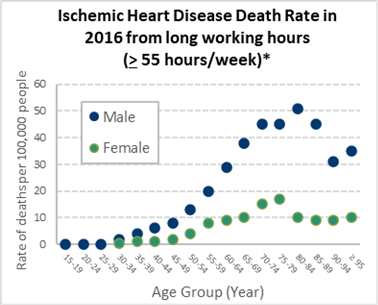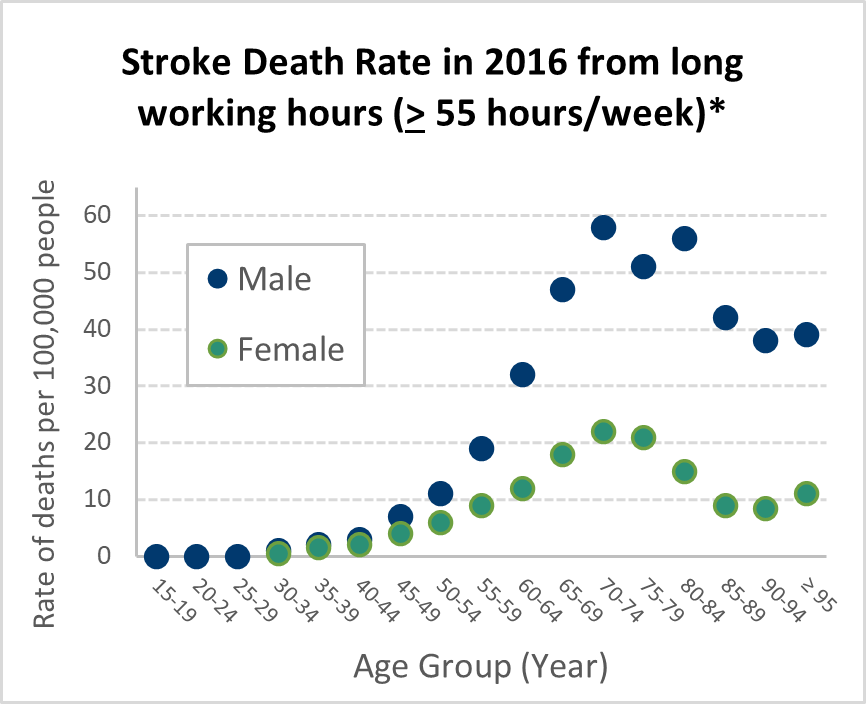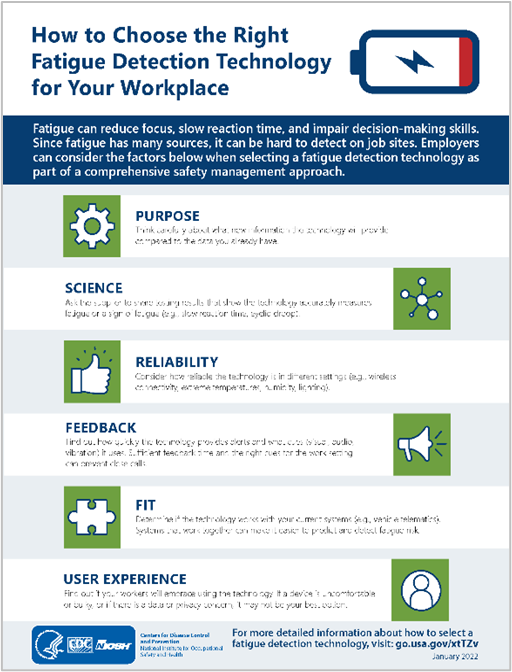Center for Work and Fatigue Research
The National Institute for Occupational Safety and Health (NIOSH) Center for Work and Fatigue Research (CWFR), launched in May 2020. The CFWR collaborates with other government agencies, industry, labor, safety professionals, and scientific researchers. Through these partnerships, the CWFR aims to:
- Raise awareness of various sources of worker fatigue
- Identify effective methods to assess fatigue-risk in workplaces
- Reduce health and safety risks associated with workplace fatigue
- Establish and cultivate national and international partnerships to conduct multi-disciplinary research on work-related fatigue and disseminate study findings.
- Evaluate effectiveness, feasibility and acceptability of fatigue monitoring and detection technologies, educational materials, and organizational strategies to better understand the benefits and challenges of various methods to reduce workplace fatigue.
- Promote a holistic approach to managing work-related fatigue by developing guidance and recommendations to manage risks, educational and informational resources, non-punitive reporting protocols, and feedback mechanisms to ensure methods remain effective.
- Actively disseminate new findings and knowledge through various communication channels to reach different worker and employer audiences for greater impact.
- Hosted a mini symposium on work-related fatigue for the NIOSH Board of Scientific Counselors on May 19, 2021. Presentation topics included the evolution of fatigue research, COVID-19 and work-related fatigue, fatigue risk management strategies and global perspectives of work-related fatigue.
- Developed 4 science blogs on shift work, fatigue, and fatigue detection technologies.
- Published an article proposing an industrial hygiene approach to anticipate, recognize, evaluate, and control work-related fatigue.
- Contributed 4 articles to the American Journal of Industrial Medicine about current knowledge and gaps in work-related fatigue research and effective countermeasures. Topics include: mining, oil and gas extraction, economic benefits and cost, and populations at disproportionate risks.
- Conducted a systematic review of fatigue interventions used in mining operations and similar industries. Substantial evidence was found for the use of bright-light treatments to improve night shift worker alertness.
- Reviewed and validated data for World Health Organization/International Labour Organization study: Burden of ischemic heart disease and stroke attributable to long work hours for 194 countries: 2000-2016. Working 55 or more hours per week had a higher risk of stroke and dying from ischemic heart disease compared to working 35-40 hours per week.
- Invited presentation on the benefits and challenges of fatigue detection technologies at the Electric Power Research Institute Thought Leadership webinar series, NIOSH Data 2 Info Workshop, National Safety Council Work to Zero meeting, OSHA Oil and Gas Conference and XXII World Congress on Safety and Health at Work
- Developed the infographic “How to Choose the Right Fatigue Detection Technology for Your Workplace” to highlight factors for employers to consider when selecting a technologies as part of a comprehensive safety management system.
- Publish a Cochrane Review on adaptation of shift work schedules to reduce sleepiness and improve sleep.
- Develop videos with tips to manage fatigue during challenging times.
- Publish a scoping review of sleep education and training interventions for nurses.
- Partner with US Department of Transportation, Volpe Center, to develop communication and educational products about risk of fatigue with automated and assisted driving.
- Publish a thematic journal issue of emerging concerns in workplace fatigue and effective solutions specific to various industry sectors.

Mention of any company or product does not constitute endorsement by the National Institute for Occupational Safety and Health, Centers for Disease Control and Prevention
The Center for Work and Fatigue Research aims to improve the health and safety of workers by reducing workplace fatigue. This snapshot shows recent accomplishments and upcoming work.


*Source: WHO/ILO long work hours study

To learn more, visit
www.cdc.gov/niosh/topics/fatigue
July 2022
